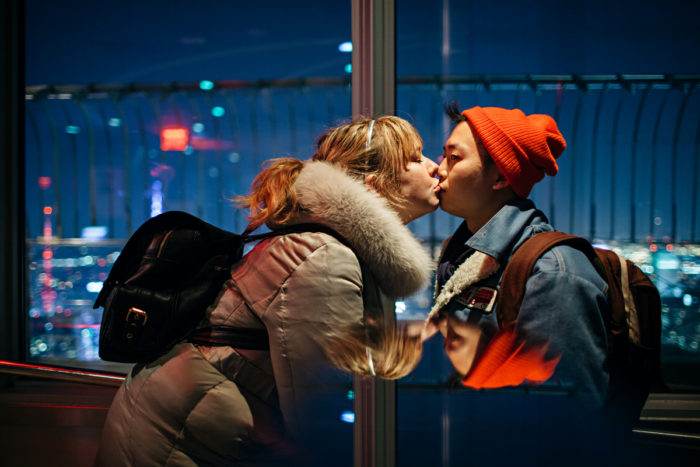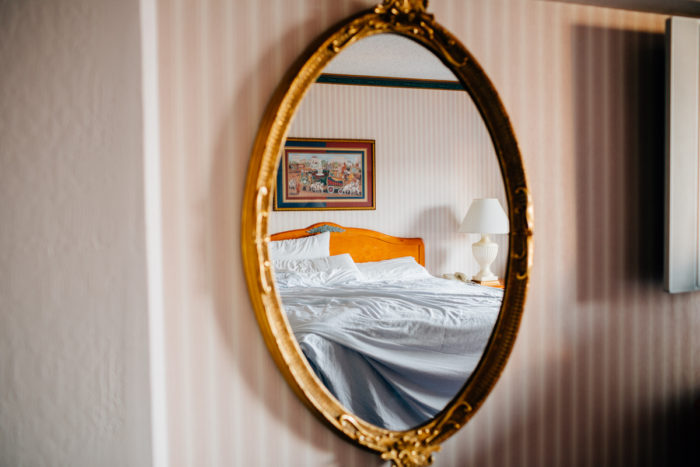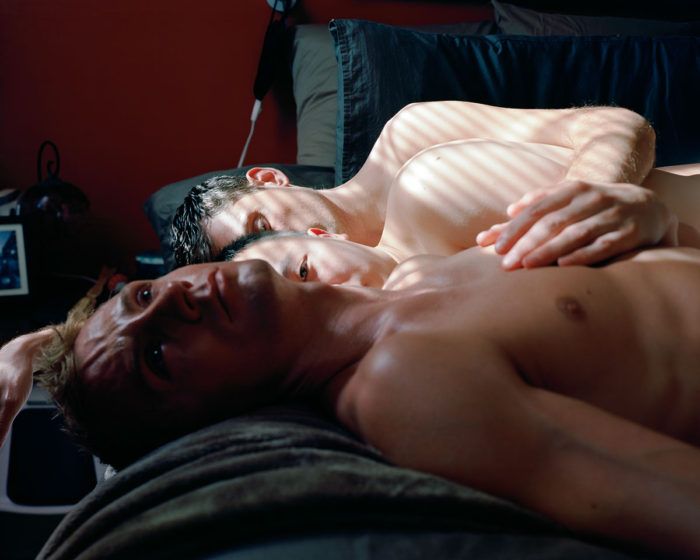
Tommy Kha is a photographer from Memphis, Tennessee. Gay, Asian-American and not out to his family, Kha explores assumptions and realities related to race and sexuality through self-portraiture. He puts a spotlight on otherness, routinely appearing awkward in his own photos. Whether situated inside or outside, with others or alone, Kha always appears somewhat out of place — at times misplaced.
“Return to Sender” at LMAK Gallery includes two series — “Return to Sender” and “All Kings Jump Ships” — as well as a piece called “Us” (2012) which was featured in “A Real Imitation,” a monograph by the artist published by Aint-Bad Editions in 2015.

“Return to Sender” is an ongoing photography series which Kha began in 2010, when he first moved to New York. Wearing the same blank, open-eyed expression in every photo of the series, Kha captures himself being kissed by a variety of men and women in bars, restaurants, hallways and streets around New York City.
In an interview with Monique Atherton for ArtFile Magazine Kha said, “I confuse my role with theirs. They have control through the kiss, but I’m also directing the situation to happen as the photographer. It’s not just duality but simultaneously existing in different states/roles.” In each photo Kha appears acted upon yet willing, passionless yet receptive to passion, present yet elsewhere.
“Return to Sender Slideshow” (2019), an 80 slide piece created with a simple slide carousel, adeptly exhibits and mimics the act of making the series. Kha produces each photo using just a camera with a tripod on a timer with exposures for half a second to three. Each click of the carousel provides us with a kiss on the lips and the next shot.
Postcard sized versions of the photos rest on shelves that line the gallery, alluding to the title of the series and the duality inherent in it. Each kiss is both returned and sent to a place from which the intended inhabitant appears absent or removed.

The works from Kha’s “All Kings Jump Ships” series deviate from his usual use of self-portraiture, except for what appears to be an eerie shadow of himself in one. Instead, they show interiors, hotel bedrooms, where unknown actions have taken place. Displaced pillows, wrinkled sheets, a man asleep in a bed in a two-bed room leave the viewer wondering: how did I get here and what happened here?

One piece from the series, “September in Reno” (2017), craftily makes use of an ovular, gold-rimmed mirror at its center by which we see an unmade bed, a white phone and a white lamp in a sunlit hotel room. Above the headboard hangs a painting that depicts carriages drawn by teams of white horses. The edge of what appears to be a wall-mounted TV screen can be seen to the right. The mirror, intimate portrayer of the self, here merely gives us clues as to what just was.

“Us” (2012) gives us another glimpse of Kha, eyes open, now inserted between two larger, white men in bed. One man is asleep, the other is awake with a furrowed brow. Only heads and torsos are visible. The sleeping man’s hand rests on the other’s chest, his arm seemingly incidentally wrapped around Kha. They appear to be positioned at the foot of the bed. This scene is not shot in a hotel room. It is intimate and intense and leaves one wondering not what happened but rather what is.
Tommy Kha has cited many influences, from T.S. Eliot to Cindy Sherman. Based between New York and Memphis, he continues to draw inspiration from both locales. He is both forthright and elusive, open and hidden. As viewers we are left guessing: where will he pop up next?
“Return to Sender”
Tommy Kha
Sept. 4 – Oct. 20, 2019
LMAK Gallery
298 Grand St.
New York, NY 10002
